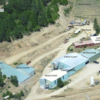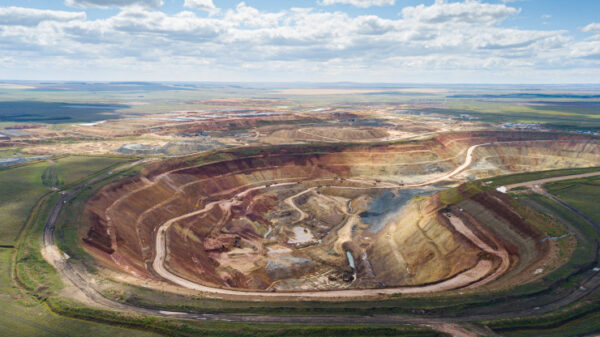The Ontario Chapter of the Canadian Land Reclamation Association (CLRA) awarded The De Beers Group with the 2022 Tom Peters Memorial Mine Reclamation Award for their exceptional reclamation work at the Victor diamond mine in Northern Ontario.
The De Beers Group’s Victor diamond mine in Northern Ontario is anticipated to become the first diamond mine in Canada to complete active closure by the end of 2023. The award recognizes high-quality research, innovative techniques, measurable outcomes, exceptional efforts, and outstanding work in mine reclamation in Ontario.
These achievements can include high-quality research, innovative techniques that advance the practice of mine reclamation in Ontario, outstanding work that has resulted in measurable outcomes such as the successful reclamation of a specific area of land, and exceptional efforts made over a number of years.
Previous mining companies to win include Kirkland Lake Gold (TSX: KL) (NYSE: KL) in 2020, Agnico Eagles Mines (TSX: AEM) (NYSE: AEM) in 2017 and Newmont Corporation (NYSE: NEM) in 2016.
The mine closed in 2019 and the company started a reclamation project to restore the site to its natural state. Long-term monitoring will continue until at least 2039, and the community will have an on-site environmental monitor during post-closure monitoring.
The Victor mine was located in a wetland area, so man-made rock pads were built for mining. However, after the mine closed in 2019, the company began a reclamation project to restore the site to its natural state.
The company used a technique that mimicked the natural shaping and deposition sequence of the surrounding environment to ensure long-term stability and sustainability. To prepare the site for reclamation, a university-led research program was conducted over a period of ten years to examine different aspects of mine closure.
De Beers is a diamond mining and trading company based in South Africa. The company was founded in 1888 and has since become a major player in the diamond industry, controlling a significant portion of the global diamond supply. De Beers operates mines in several countries, including Canada, Botswana, Namibia, and South Africa.
Read more: NevGold’s oxide gold drill program in Nevada finds positive results
Read more: NevGold submits exploration and expansion plans for gold project in Nevada
Reclamation process started in 2014
Reclamation began in 2014 with a seed collection program led by the Attawapiskat First Nation. This program harvested seeds from the region to provide a source for over 1.4 million trees and shrubs that were planted on the site. A processing facility, hydroponic germination chamber, greenhouse, and outdoor nursery were used to grow many of these seedlings on-site.
An artificial soil called a technosol was created using natural materials salvaged from the mine construction, as there were no traditional soils on the site. Pioneer vegetation species were targeted instead of using fertilizers.
To speed up natural recovery, the pit was refilled with water in less than two years by reversing the dewatering systems used during mining. Over 35 hectares of aquatic habitat was created using bioengineering techniques and floating wetland complexes. Innovations like using an agricultural drone to seed large areas of the site, satellite monitoring for stability, and aerial imagery to scan plant health were also implemented.
During the demolition and closure process, salvageable materials were reallocated and repurposed through partnerships with local communities. Recycling joint ventures were formed with First Nations partners, resulting in over 600 truckloads of materials being salvaged from the site and transported to recycling facilities. The closure and reclamation project was a collaboration between De Beers, the Attawapiskat First Nation, other communities in the region, and regulators.
“Our goal in closing Victor mine has always been to return the site to a natural state that is safe for people and animals,” said Moses Madondo, managing director of De Beers Group.
Read more: NevGold finds high-grade gold underneath the surface at Nutmeg Mountain
Read more: Gold is still the best hedge against inflation: NevGold CEO
De Beers employs over 600 people in Canada
De Beers employs over 600 people in Canada. It operates the joint venture Gahcho Kué mine with Mountain Province Diamonds (TSX: MVPT) in the Northwest Territories and are currently closing the Snap Lake mine in the same region. Additionally, De Beers has an exploration team that is actively searching for new diamond deposits in Canada. The company is also working on advancing the Chidliak Project to establish a diamond mine on Baffin Island.
In addition to De Beers, there are other companies involved in diamond mining in Canada. Dominion Diamond Mines operates the Ekati Diamond Mine and has a 40 per cent stake in the Diavik Diamond Mine, both located in the Northwest Territories. North Arrow Minerals (CSE: NAR) is a mineral exploration company focused on discovering diamond deposits in Canada, with a particular emphasis on Nunavut and the Northwest Territories.
.
Follow Joseph Morton on Twitter
joseph@mugglehead.com














